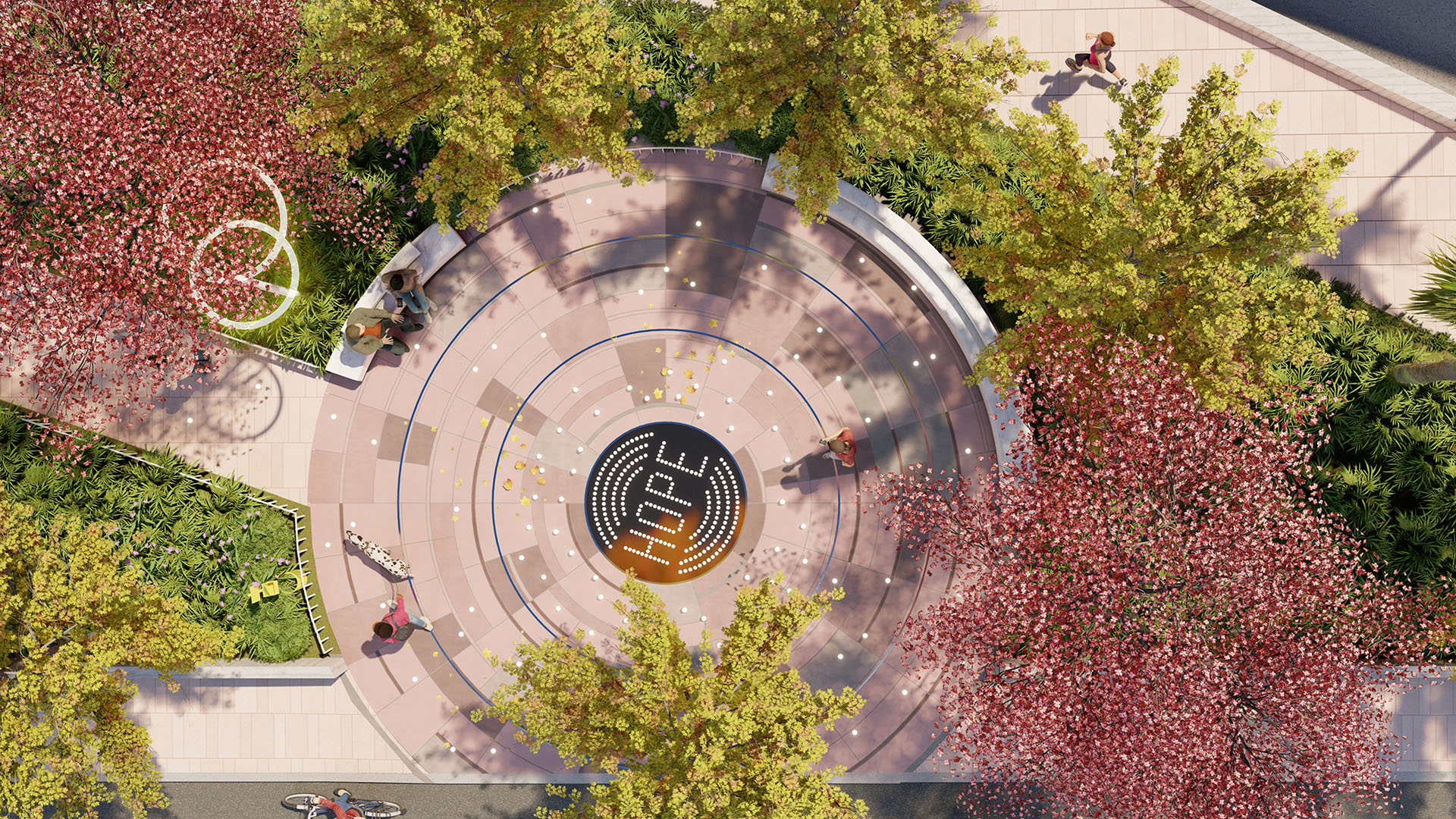The Memorial at Harvey Milk Plaza
During a month focused on the contributions and ongoing struggles of LGBTQ+ individuals across the world, the redesign of Harvey Milk Plaza strikes a particularly timely note.
Milk, a member of San Francisco’s Board of Supervisors and one of the United States’ first openly gay elected officials, shed a brilliant light on the injustices that LGBTQ+ people have faced. Assassinated along with Mayor George Moscone in 1979, Milk continues to this day to inspire those who battle for social justice and equity.

SWA is proud to be working to better honor Harvey Milk with a memorial at the historic intersection of Market and Castro. Harvey Milk Plaza has been the site of countless gatherings and protests, including a candlelight vigil the night of Harvey’s untimely death and the White Night riots, which were sparked by the leniency of the sentence handed down to his assassin. The design team is working to enhance the function of the Market/Castro transit station that lies beneath the plaza, while striving to create a worthy memorial to Harvey and the movement he helped catalyze.
“We understand the significance of developing the site to become the focal point of Harvey’s message and his importance: not only for San Francisco’s Castro neighborhood, but also for the national and international community,” SWA project lead Daniel Cunningham says. “We are excited by the potential for the redesign to properly capture the community’s ambitions and hopes, and we are committed to a dialogue that will help express them.”
That dialogue has, to date, included two engaging public meetings, with an additional two planned for June 23 and 24, as well as a robust interactive online engagement platform which solicits broad feedback. Additionally, the design team has met with local organizations including the Historical Society, youth and cultural groups, and is committed to a design that properly represents Harvey Milk and the community the memorial serves.
“To be worthy of Harvey’s legacy, the memorial should be relevant and impactful for years to come,” says Cunningham. “We want to give form to his vision of equality and authenticity for everyone, everywhere.”
The design encompasses three core elements: Pedestal, Beacon, and Memorial Grove.

The Pedestal literally elevates some of Milk’s final words: “All I ask is for the movement to continue.” It will provide a focal point for gatherings and public speaking events, as well as commemorating the historical context in which Milk’s assassination took place. The team envisions the Pedestal as a living monument to his legacy, which will be informed by future activism. It also recalls the soapbox Milk used on the site while advocating for equality.

Another of the design’s monumental features is The Beacon, a digital display that will feature iconic photographs of Harvey Milk and the Castro neighborhood, as well as the struggles and victories of the movement he helped to propel. The form of the Beacon is inspired by the protest signs social justice movements have been using for decades – the same ones that littered Harvey’s Camera Shop, and perhaps the one you have at home. This modular element is composed of several digital panels, some with dynamic displays that spotlight current inspirational messages of protest and celebration, and, when needed, of consolation.
A symbol of hope and progress, The Beacon’s flexibility will allow it to celebrate current and ongoing events and activism while reminding visitors of the work that has been undertaken previously in advancing the rights of all individuals.

The Grove is perhaps the most symbolic of the redesign’s offerings, with its 11 trees representing the months Milk spent in office as San Francisco Supervisor and the trees’ species representing the places he lived during his life: his hometown of New York; Texas, where he spent years as a youth; and San Francisco, the city where he served with distinction and cemented his place in history. The diverse collection of species embodies societal diversity as well as Milk’s informal and eclectic personality and political approach.
As a practice, SWA endeavors to support the ongoing exchange of understanding and community among all people. With our memorial work in particular, we strive to create enduring and welcoming places where conversation, empathy, and joy can thrive, even when colored by grief. With the opportunity to refresh Harvey Milk Plaza via this public-private partnership, we hope to express the triumphs and tragedies of the past while encouraging present and future generations to emulate a true pioneer in the realm of social justice.


